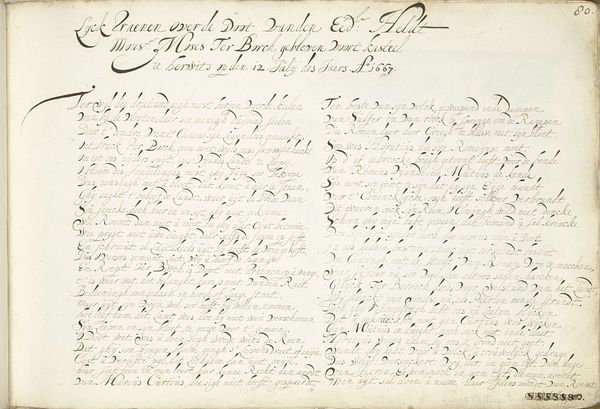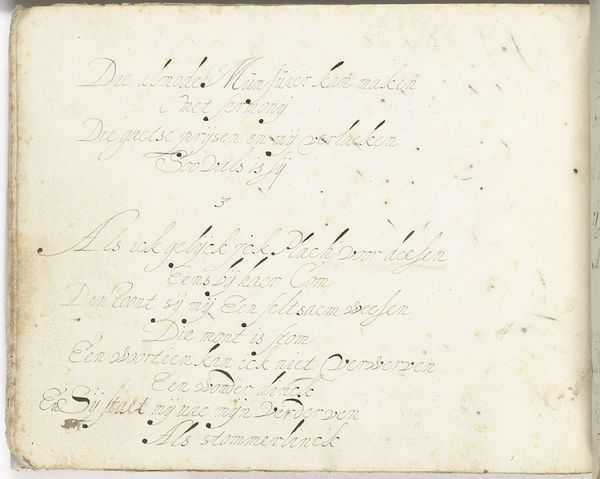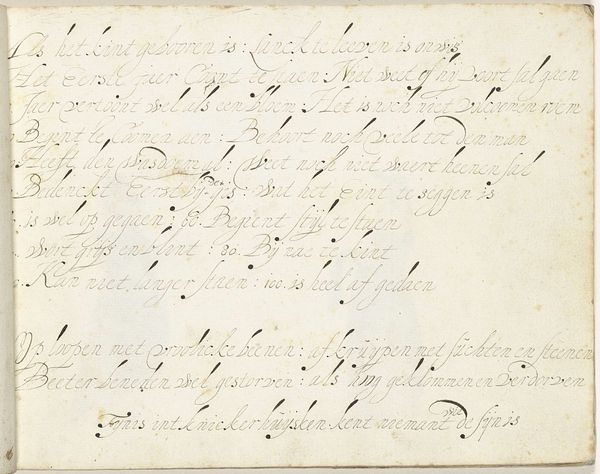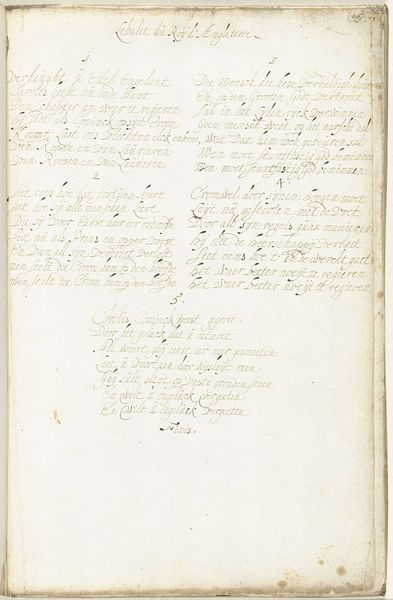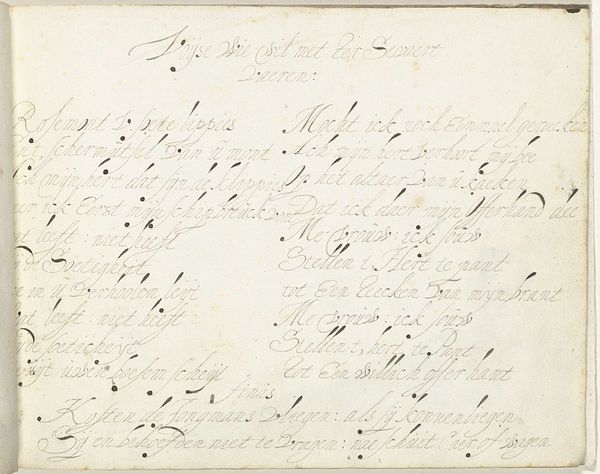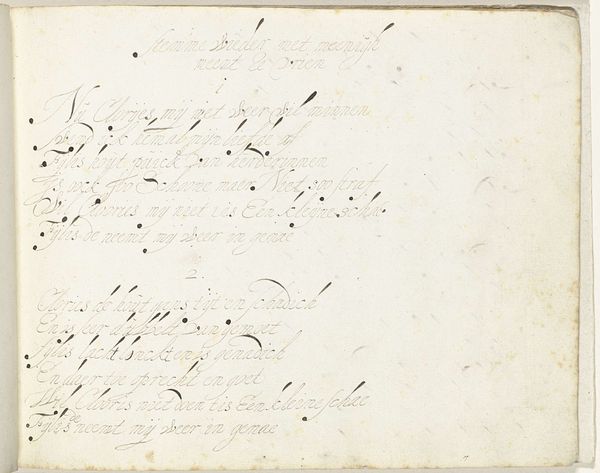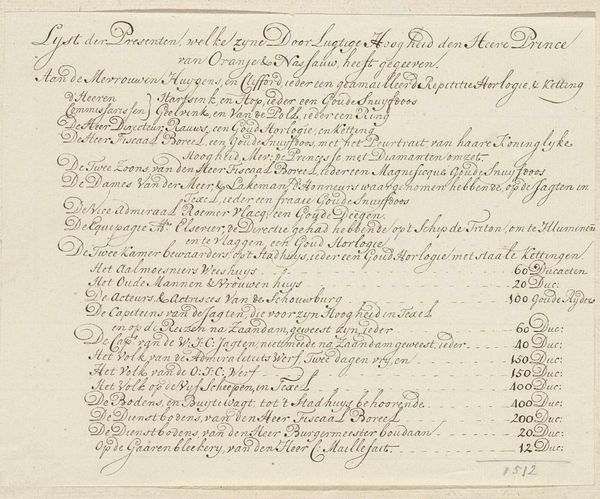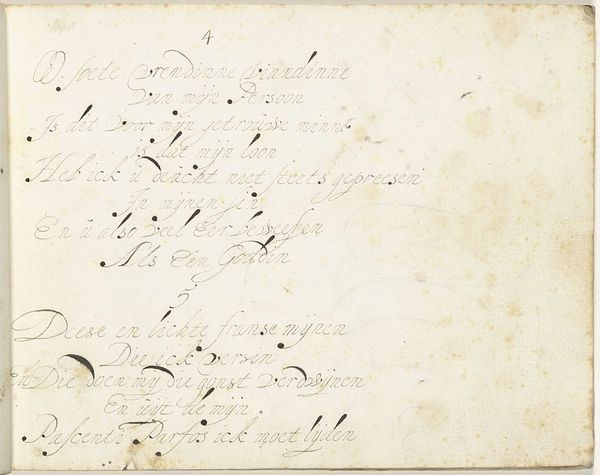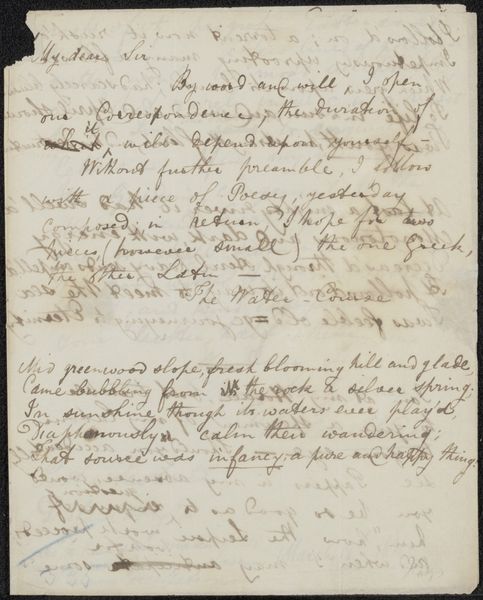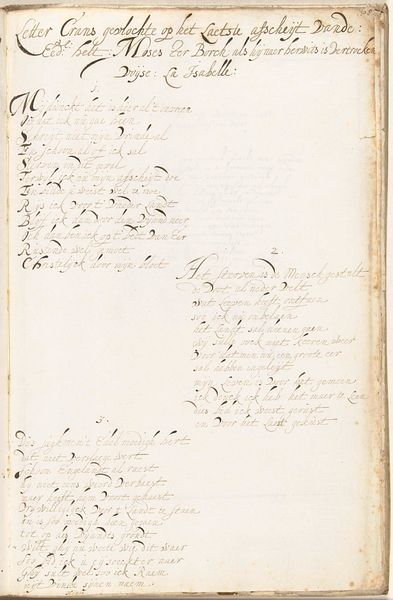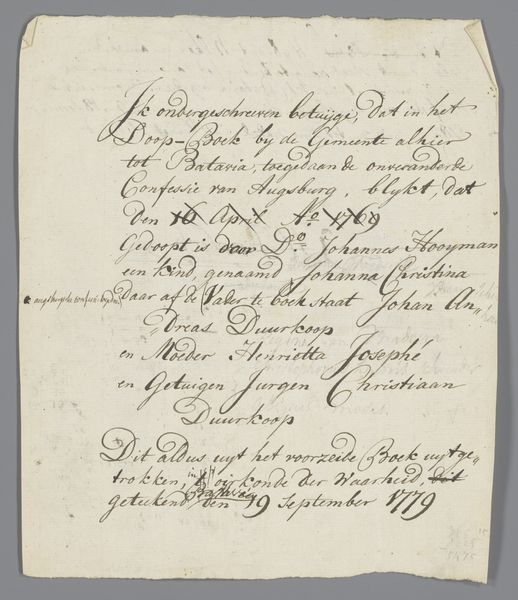
drawing, paper, ink
#
drawing
#
toned paper
#
hand written
#
hand-lettering
#
dutch-golden-age
#
hand drawn type
#
hand lettering
#
paper
#
tea stained
#
ink
#
fading type
#
calligraphic
#
watercolour bleed
#
genre-painting
#
watercolor
#
calligraphy
Dimensions: height 200 mm, width 308 mm
Copyright: Rijks Museum: Open Domain
Curator: Here at the Rijksmuseum we have a delicate drawing made by Gesina ter Borch after 1667, titled "Gedicht ter ere van Moses ter Borch," which translates to "Poem in Honor of Moses ter Borch." It’s a poem rendered in ink on paper, showcasing ter Borch's distinctive calligraphic style. Editor: My initial thought? It feels so personal, like stumbling upon a private, treasured document. The aged paper and the faded ink give it such an intimate, almost vulnerable quality, don’t you think? It’s more than just words; it's a whisper from the past. Curator: Exactly! Gesina was honoring her brother Moses after his death, so its creation was deeply personal. Think about the role of women artists during the Dutch Golden Age; often confined to the domestic sphere, art making and even poetry became ways of expressing themselves and commenting on the world. The act of memorializing family was a potent role for art then. Editor: I’m completely drawn to the hand-lettering, the way the ink bleeds in spots – imperfections that just amplify the authenticity. I feel like I can see her hand moving across the page, you know? I wonder, did she pause, reflect, maybe shed a tear as she wrote? Curator: I hadn't thought about that so vividly. This piece definitely highlights the importance of family ties, too. These poems weren't intended for public display originally, but instead served as forms of personal remembrance within family circles. As such, a lot of women's artwork in particular runs the risk of not being treated as "art," but as domestic ephemera that disappears with time. Editor: True! Yet these “domestic” spaces – so called – can reveal complex layers of emotion and power. Thinking about it, there's a fragility to memory itself and how we choose to keep stories alive – like ter Borch’s work. In my own way, as an artist, I see beauty in things which are fading. Curator: Well said. This drawing provides us a unique lens not only into 17th-century Dutch culture but also into the inner life of a woman artist grappling with grief and celebration through the act of art. Editor: Ultimately, it makes you reflect on legacy and how something so personal can become timeless.
Comments
No comments
Be the first to comment and join the conversation on the ultimate creative platform.
